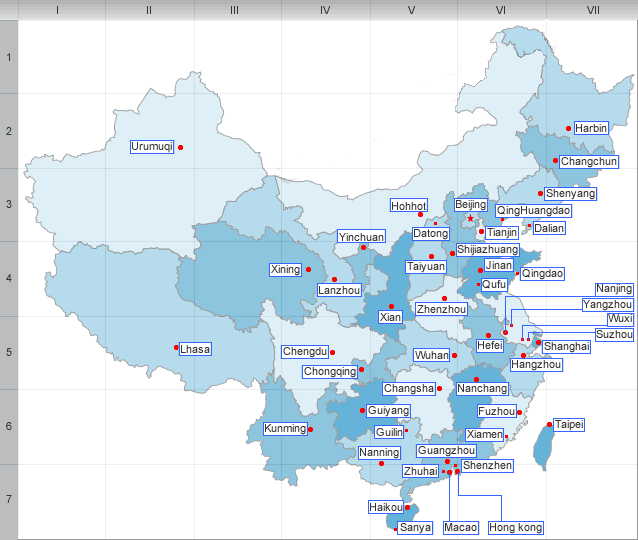Hezhou Overview
Overview
Hezhou is a prefecture level city situated in the northeastern corner of Guangxi Zhuang Autonomous Region (often referred to simply as Guangxi Province, even though it is an autonomous ethnic region), near the borders with Hunan and Guangdong Provinces. Hezhou's neighbor city to the northwest is the rightly famous city of Guilin, with its many natural splendors, while Hezhou is bordered to the south-southwest by the almost as famous city of Wuzhou. Because of its strategic location along the Guilin-Wuzhou Highway, and given its close proximity to the aforementioned two neighboring provinces as well as its link to Hong Kong and Macao, Hezhou has become an important transportation hub. The city is also situated about 500 kilometers east-northeast of the provincial capital, Nanning.
The city's name was formerly written as two words: He Zhou (where "zhou" means "prefecture"), which was originally set up as a shire ("county", in the U.S.), i.e., as He Shire, by the then Kingdom of Wu (CE 229-280) of the Three Kingdoms (CE 220-280) Period. The elevation in status from a county seat to a prefecture level city occurred during the Sui (CE 581-617) Dynasty. The county seat cum city originally acquired its name ("He") from the river that runs through it.
Greater Hezhou's population is just above two million, with about two hundred thousand inhabitants in the urban area itself. The area is populated by a number of different ethnic groups, most notably the Zhuang ethnic group, for whom the region is named, as well as Yao, Miao, Dong and other ethnic groups, in addition to a large contingent of Han Chinese, China's ethnic majority.
Hezhou shares its natural beauty with its neighboring cities of Guilin and Wuzhou, being surrounded by a dense virgin forest that is home to a richly varied plant and animal life, prompting some to call the area a natural garden and zoo. The area's idyllic scenery is also punctuated here and there with hots springs and water falls as well as with limestone caves. Neighboring Huangyao Ancient Town, located on the Li River between the cities of Hezhou and Guilin, was built in CE 972 during the Song (CE 960-1279) Dynasty.
Huangyao Ancient Town, which is characterized by its distinctive architecture featuring blue bricks with black ties, flying eaves and brightly painted wooden beams that stem from the ancient architectural style 'south of the Qin Mountains', is laid out in the style of Jiugong (Nine Palaces) and Bagua (Eight Diagams). Both of these terms stem from Taoism. Jiugong, which originally had a specific reference in Taoist cosmology, gradually became a general metaphor for sacred spaces, while Bagua, which stems from the famous work, The Classic of Changes (aka the I-Ching), is a reference to the eight-sided diagram of life, each of whose eight sides represents a different facet, or aspect, of life, such as wealth, career, marriage, etc. Huangyao Ancient Town was famous during the Ming (CE 1368-1644) and Qing (CE 1644-1911) Dynasties, and retains to this day much, if not most, of its ancient historical flavor.
In addition to the quaint ancient village of Huangyao, greater Hezhou offers a number of other interesting cultural relics and sightseeing attractions such as ancient towers, a stone forest (like Guilin, the area around Hezhou is an ancient karst landscape), the unique houses of the Ke-Jia ethnic minority (the Ke-Jia, alternatively Hakka, are an ancient subgroup of the Han ethnic majority), numerous 1000-year-old banyan trees, Fu Mountain - which stands erect in the middle of the He River - Civilization Pavilion and Hejie Ancient Town.
With its lush landscapes, its many natural wonders and cultural attractions as well as its mild weather, it is little wonder that Hezhou, like neighboring Guilin, has become a backpacker's paradise. There is so much to see and do in the greater Hezhou area, with its idyllic surroundings that provide the perfect backdrop for sightseeing as well as for all other outdoor activities, that the city, which is also a university town (Hezhou University, which is divided into two campuses amid lush green parks, is located in the heart of the city) is not only a major transportation hub, but is fast becoming a major sightseeing hub as well.
| PREV:Yulin Overview | Next:Hechi Overview |



